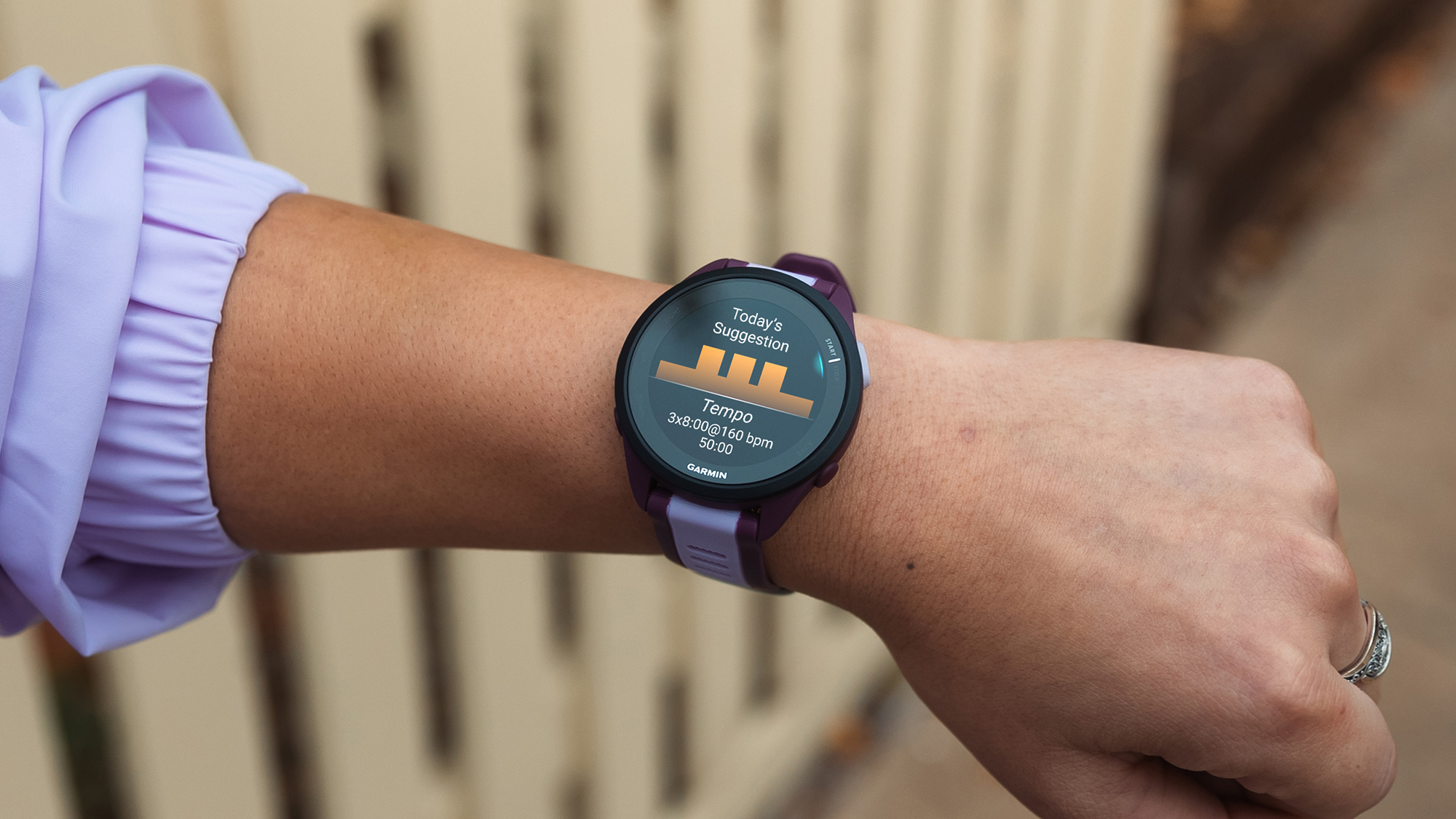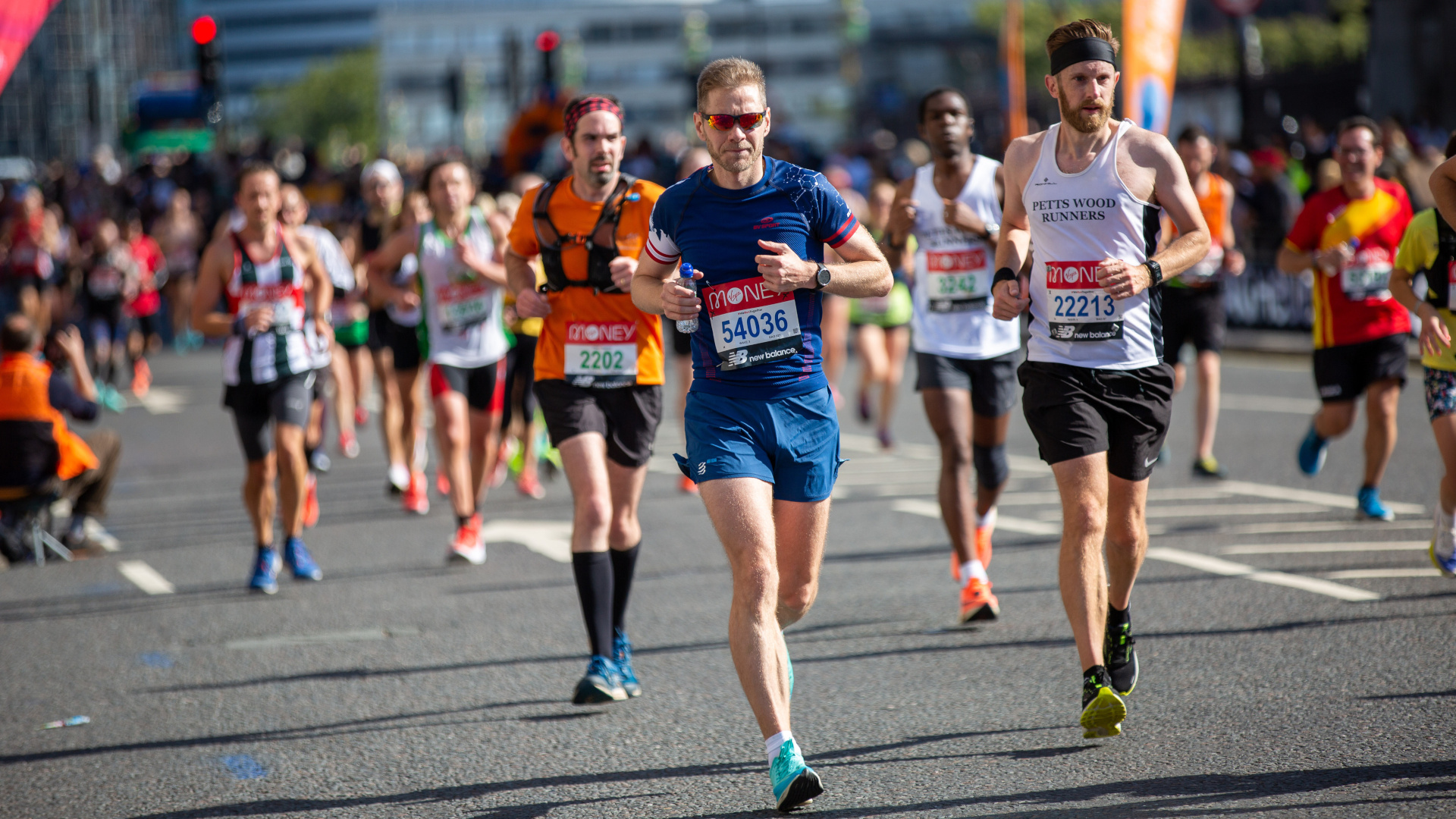I'm running the London Marathon, and I wanted to know how accurate Garmin's Race Predictor tool really is – so I grilled Garmin
Why my Garmin watch's Race Predictor widget fills me with anticipation and fear

“This doesn’t seem right,” I thought, looking at my watch. The little race predictor widget on my Garmin Epix read “TCS London Marathon: 3W, 3:35:16.” That stands for “three weeks away, predicted time: three hours, 35 minutes, 16 seconds.”
It was way faster than I was planning on running, much faster than my usual long training runs, and way quicker than my first marathon (four hours, four minutes, 51 seconds). It made me more than a little nervous.
The best Garmin watches, like the Garmin Epix Pro, are full of all sorts of useful tools and gadgets, especially when combined with Garmin Connect, the watches’ comprehensive companion app. Using the combination of hardware and software, I plan running routes on my phone and export them to my watch, so I get turn-by-turn directions as I go and notifications if I drop below my recommended pace. If I wear my watch at night, I get a morning update on how well I’ve recovered from my last workout, and how ready I am to go again. If I run at night, I turn on the built-in LED so other pedestrians, cyclists and traffic can see me coming.
However, it’s the Race Predictor tool that’s vexing me at the moment. At the time of writing, the TCS London Marathon is just a few weeks away, and I’m embarking on my last chunk of training before the big day. Although Garmin has offered me an impressive time – to provide some context, 3:31 is the top 10% of all male marathon runners, according to RunRepeat – none of my training run times suggest I can remotely achieve this goal.
In fact, I’ve been training to hit a more modest goal of 3:50, which means Garmin thinks that, if all the right conditions are met, I can finish 15 minutes faster than my trained-for time. Why?
Asking the experts: What does Garmin say?

Richard Robinson, Senior Product Manager at Garmin UK, told me: “Garmin’s race predictor tool utilizes your VO2 Max and current training data to predict your 5k, 10k half marathon and marathon times.
“The widget pulls the data together from your recent exercise habits to give you a guideline as to what it believes you can achieve. This should be treated as a guideline and not a hard prediction.”
Sign up for breaking news, reviews, opinion, top tech deals, and more.
VO2 Max is a simple fitness metric that measures how much oxygen your body can use while you exercise. The higher your VO2 Max, the more oxygen your body can use. You get a single number (mine’s currently 54) which stands for “milliliters of oxygen used in one minute per kilogram of body weight”. By looking at this number as a measure of fitness, and examining your training history, Garmin can take a well-educated guess at how well you’ll do during a marathon.
“You'll need to run outside to gain VO2 max data, and use the widget as a training tool to see your performance trend if you are aiming for a particular time,” said Robinson. “It’s also worth ensuring your physiological data in Garmin Connect is up to date to guarantee your VO2 estimate is the most accurate (i.e your height, weight, resting heart rate, and max heart rate).”
You manually input your height and weight into Garmin Connect, while resting and maximum heat rates are looked at by the watch during sleep and exercise. Essentially, Garmin’s saying the more you wear the watch, the more accurate your estimate is likely to be.
Welcome to the real world

However, historic running forums and subreddits are awash with people saying Garmin’s Race Predictor tool isn’t particularly accurate, with the most common complaint being that it overestimates most runners' capabilities, although some serious athletes complain of underestimations.
I think I know why. For one, outside of VO2 max tests on treadmills with full-face oxygen masks, Garmin's estimations are just that: estimations. I'd love for the Race Predictor feature to be pinpoint accurate, but if it was, what would be the point in running? We'd just meet up on the day, compare numbers, see who wins, and go home.
In addition to Garmin's margins for error, marathons are complicated beasts. You have to stop for water, your path often gets hindered by crowds of other runners, and issues outside of oxygen-related fitness – hip pain, knee pain, cramps – can crop up even in highly-trained individuals. The weather might be awful.
You might even (and this definitely isn’t me speaking from personal experience) feel sick and bloated due to nerves and consuming too many sickly energy gels, and have to stop and use the course-side porta-potties around mile 12. Ahem.
Mike Tyson once famously said “everyone has a plan until they get punched in the mouth” and the saying is just as applicable to long-distance running as it is to boxing. You can go in with a plan and reach the start line fully prepared, but there are still plenty of things that can go wrong during the course of 26.2 miles. Garmin’s Race Predictor represents an estimate of what we could potentially achieve in a vacuum, but even the best running watch can’t tell you when you’re about to get cramp. Yet.
You might also like

Matt is TechRadar's expert on all things fitness, wellness and wearable tech.
A former staffer at Men's Health, he holds a Master's Degree in journalism from Cardiff and has written for brands like Runner's World, Women's Health, Men's Fitness, LiveScience and Fit&Well on everything fitness tech, exercise, nutrition and mental wellbeing.
Matt's a keen runner, ex-kickboxer, not averse to the odd yoga flow, and insists everyone should stretch every morning. When he’s not training or writing about health and fitness, he can be found reading doorstop-thick fantasy books with lots of fictional maps in them.